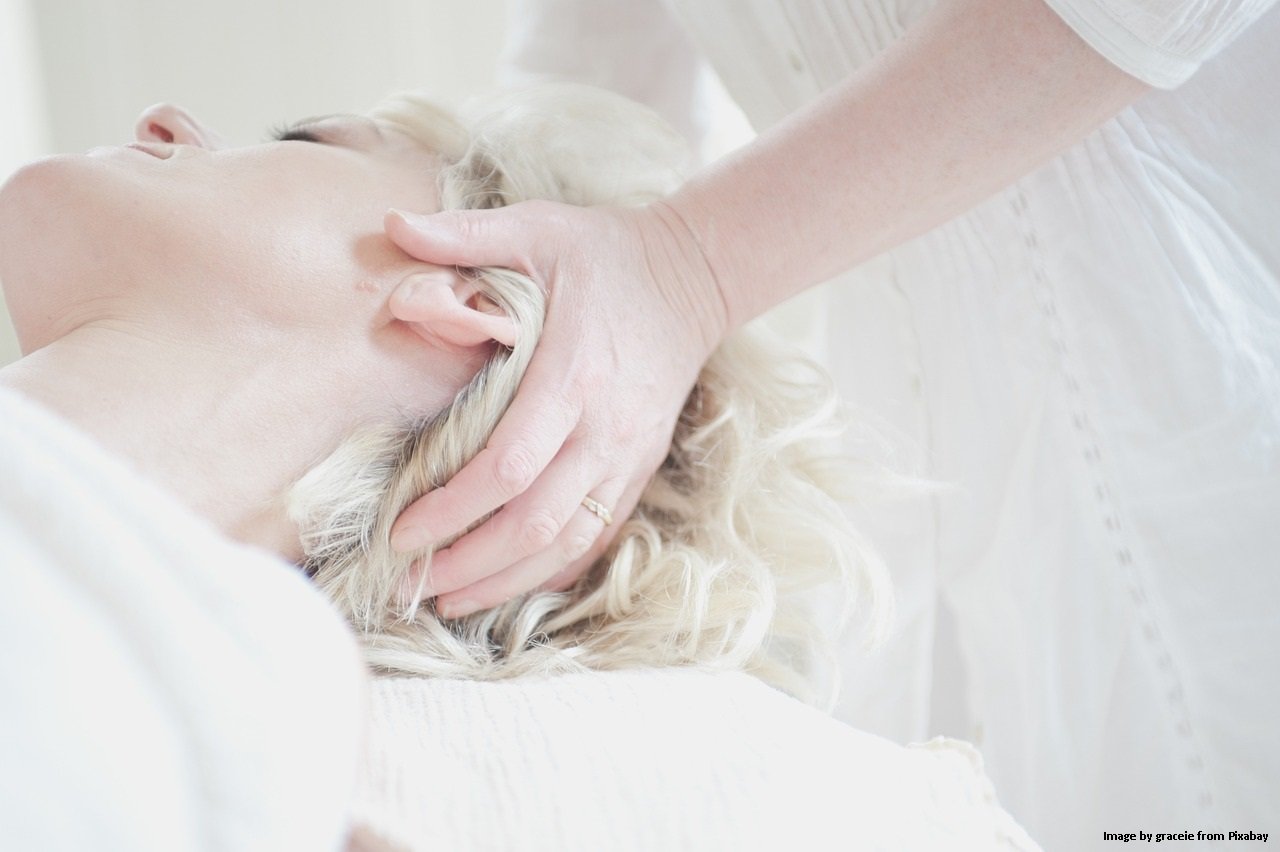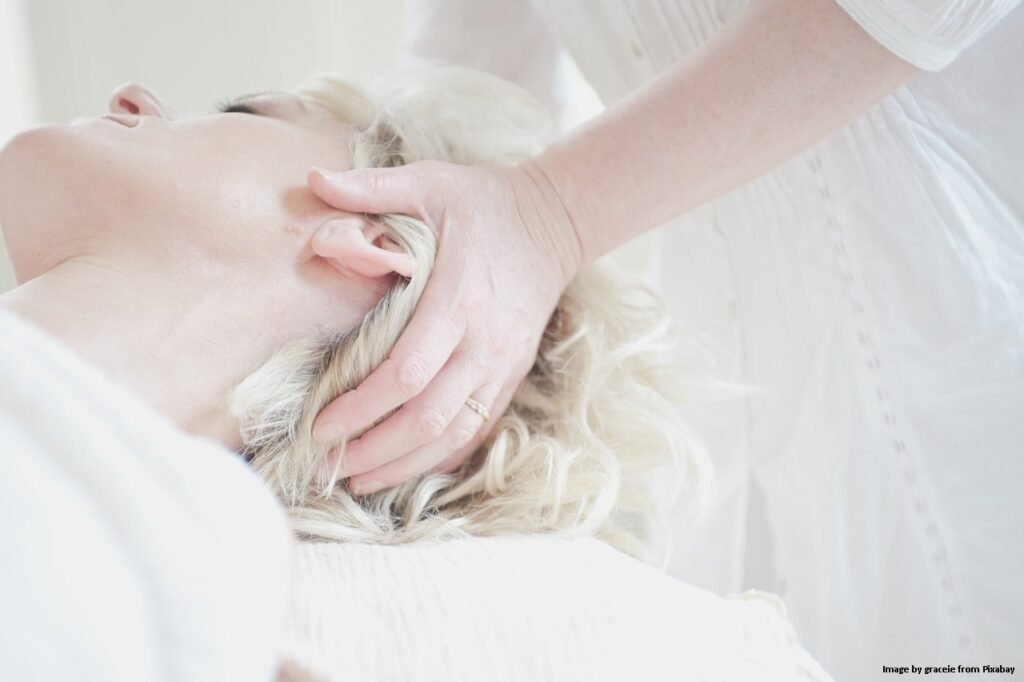Physical Address
304 North Cardinal St.
Dorchester Center, MA 02124
Physical Address
304 North Cardinal St.
Dorchester Center, MA 02124

Please note: If you are in urgent need of mental health support, contact your GP or Call 116 123 to talk to Samaritans. If you’re under 19, you can also call 0800 1111 confidentially to talk to Childline.
Ever felt like your shoulders were glued to your ears? Or maybe your jaw was permanently clenched, as if you were auditioning for a starring role in a silent film about existential dread? I’ve been there, trust me. Life in any major city, with its bustling cities and sometimes unpredictable weather, can be a masterclass in accumulating tension. From demanding work to the daily commute, stress creeps in and, before you know it, it’s set up camp in your muscles, making you feel more like a tightly wound spring than a relaxed human being.
But what if I told you there’s a way to uncoil, to truly let go of that physical and mental burden? Something beyond just a hot bath and a strong cuppa. I’m talking about assisted stretching for stress relief, a novel approach to managing stress that’s making waves in the wellness world. It’s not just about touching your toes; it’s a profound experience that can literally stretch away your worries.
Alright, let’s get down to brass tacks. You might be wondering, “What exactly is assisted stretching?” Well, imagine this: instead of you grunting and straining to reach that elusive hamstring stretch, a trained professional gently guides your body into deeper, more effective stretches. They know your anatomy, your limits, and how to coax your muscles into releasing tension you didn’t even know you were holding.
So, how does this magical touch work its wonders for stress relief? It’s all about the connection between your mind and body. When you’re stressed, your sympathetic nervous system—the “fight or flight” response—goes into overdrive. Your muscles tighten, your heart rate increases, and you’re generally on high alert. Assisted stretching, by systematically elongating and relaxing your muscles, helps to activate your parasympathetic nervous system – the “rest and digest” response. This is where the magic happens for stress relief.
Think of it like this: when your muscles are chronically tight, they’re sending constant “danger” signals to your brain. This keeps your stress response firing. By gently extending and releasing these muscles, assisted stretching helps to quiet those alarm bells. It’s like telling your nervous system, “Hey, chill out, everything’s fine here.”

It’s a fascinating dance between your muscles, nerves, and brain. When a skilled practitioner performs assisted stretching, they apply gentle, sustained pressure to your muscles. This action stimulates what are called “mechanoreceptors” – tiny sensory organs in your muscles and tendons. These mechanoreceptors then send signals to your brain, essentially communicating that the muscle is lengthening and relaxing.
This cascade of signals helps to downregulate the activity of the sympathetic nervous system and upregulate the parasympathetic nervous system. The result? Your heart rate slows down, your breathing deepens, and your blood pressure decreases. You literally feel your body letting go, like a sigh of relief. It’s a physiological shift that directly combats the physical manifestations of stress.
While the comprehensive mechanisms of stretching for range of motion and performance have been extensively reviewed (Weerapong et al., 2004), the physical relaxation induced by stretching, particularly when assisted, promotes a shift towards parasympathetic dominance, encouraging a state of calm. It’s less about a direct ‘switch’ and more about creating conditions where your body can relax.
You might be thinking, “But I stretch after my run, isn’t that enough?” And while any stretching is generally good, assisted stretching is a whole different ball game.
Here’s a quick rundown to help you see the light:
| Feature | Regular Stretching (Self-Guided) | Assisted Stretching (Professional) |
| Depth of Stretch | Limited by your own flexibility and pain tolerance. | Guided by a professional, allowing for deeper, more effective stretches. |
| Muscle Activation | You’re actively engaging muscles, sometimes leading to compensatory movements. | Passive elongation of muscles, allowing for complete relaxation. |
| Form & Technique | Often prone to incorrect form, potentially leading to injury. | Expert guidance ensures correct and safe execution. |
| Targeted Release | General stretching, may miss specific tight spots. | Precision targeting of individual muscles and fascial lines. |
| Mind-Body Connection | Can be mindful, but often hurried. | Encourages deep relaxation and heightened body awareness. |
| Relaxation Potential | Moderate, depends on individual focus. | High, due to passive nature and skilled guidance. |
| Expertise & Safety | Relies on self-knowledge, potential for overstretching. | Benefits from professional knowledge of anatomy and biomechanics. |
As you can see, assisted stretching takes the guesswork out of it. It’s like having a personal guide to navigate your body’s intricate network of muscles, ensuring you get the most out of every stretch, especially when it comes to muscle tension relief.
Okay, so we know it helps you relax. But what are the tangible benefits you can expect from incorporating assisted stretching into your stress management toolkit? Buckle up, because there are quite a few:

This is a really important question, and the answer, generally, is yes, but with crucial caveats. A good assisted stretching practitioner is highly trained and understands individual limitations.
The key here is finding a reputable and qualified professional. Companies like StretchMasters® pride themselves on having highly trained therapists who conduct thorough assessments to ensure the safety and effectiveness of each session, tailoring their approach to your individual needs and physical condition.
Ah, the million-dollar question! There’s no one-size-fits-all answer, as it depends on your current stress levels, activity, and goals. However, I can give you some general guidance.
For optimal stress relief and to truly embed the benefits, consistency is key. Many people find that 1-2 sessions per week provide significant relief and help to maintain a relaxed state.
Think of it like this: if you’re trying to empty a bucket of water (your stress) that’s constantly being refilled, you need to keep bailing. Regular assisted stretching acts as that bailing mechanism, preventing stress from accumulating to overwhelming levels.
Some individuals, especially those experiencing acute stress or chronic muscle tension, might benefit from more frequent sessions initially, perhaps 2-3 times a week, to kickstart the relaxation response. Once they’ve achieved a good baseline of flexibility and reduced tension, they can often reduce the frequency.
Absolutely, and this is where assisted stretching truly shines as a holistic wellness tool.
Let’s break it down:
It’s a virtuous cycle: you stretch, you relax, you sleep better, you feel calmer, and you’re better equipped to manage stress.
So, you’re curious, perhaps even a little excited, to try this out. What does a typical session look like?
Firstly, it’s not some kind of medieval torture chamber. It’s a calming and therapeutic experience.
Many top-tier providers, like StretchMasters®, offer personalised stretching sessions that are tailored to your unique needs, ensuring a truly bespoke experience for professional stretching.

While nothing truly replicates the expertise of a professional, there are certainly tools and devices you can use at home to supplement your assisted stretching sessions and maintain your flexibility. These can be particularly helpful for at-home assisted stretching tools:
It’s important to use these tools correctly to avoid injury. There are plenty of online resources and videos demonstrating proper technique. However, for deep, truly effective and safe assisted stretching, a professional remains the gold standard.
You know that feeling when you first step out of a hot bath? Instant bliss, right? Assisted stretching can offer a similar immediate sense of relief. Many people report feeling noticeably calmer and more relaxed during and immediately after their very first session.
However, like any good habit, the long-term, cumulative benefits really kick in with consistency.
It’s not a magic bullet, but it’s pretty darn close to being a super-powered stress-relief wand.
Absolutely! In fact, combining assisted stretching with other relaxation techniques creates a powerhouse approach to stress management. Think of it as building a robust toolkit for your well-being.
Here’s how they complement each other beautifully:
Think of assisted stretching as the perfect preparation for other relaxation techniques. It primes your body to fully receive the benefits of whatever calming activity you choose next. This integrated approach is key for comprehensive wellness program stretching.
So, there you have it. Assisted stretching isn’t just a fleeting trend; it’s a scientifically supported, profoundly effective way to tackle the pervasive problem of stress. It’s an investment in your physical and mental well-being, offering a unique blend of physical release and mental calm.
In a world that often feels like it’s spinning faster by the day, taking the time to truly unwind and release tension isn’t a luxury; it’s a necessity. If you’re based in the UK and feeling the squeeze of modern life, I wholeheartedly encourage you to explore the benefits of assisted stretching. You might just find that it’s the missing piece in your stress-relief puzzle.
Ready to experience the liberating feeling of a truly relaxed body and mind? Why not explore what professional assisted stretching can do for you? Many excellent providers across the UK, such as StretchMasters® Stretch Clinics, are ready to help you on your journey to a calmer, more flexible you.
Remember, a stretched body is a stress-free body. Go on, give yourself the gift of release.
A Note on Mental Health.
Assisted stretching is a good way to help you relax and manage stress, but it cannot take the place of professional mental health care. If you often feel stressed, anxious, or depressed, it’s important to speak with your doctor or a licensed mental health professional. They can offer the help and support you need. Don’t hesitate to reach out for professional guidance.
You can also reach out to charities and organisations that offer confidential support such as:
Mind: www.mind.org.uk | 03444 775 774 (helpline). Offers information and support via phone, email, and an online community called Side by Side.
Samaritans: www.samaritans.org | 116 123 (free, 24/7). Provides confidential emotional support 24/7 through a freephone line and online support.
Anxiety UK: www.anxietyuk.org.uk | 03444 775 774 24/7 Self-care infoline. Offers information, support, and understanding for individuals with anxiety disorders.
NHS: www.nhs.uk. Offers various support services, including talking therapies like CBT, which can be accessed directly through the NHS without a referral from a GP.
References
Stretch the Stress Away: How Assisted Stretching Supports Stress Relief.(n.d). https://stretchmasters.co.uk/assisted-stretching-for-stress-relief/
Shimada, K., Iizuka, M., & Nakashima, M. (2012). Stretching exercises improve sleep quality in older adults. Journal of Physical Therapy Science, 24(2), 173-176. https://www.jpt.org.br/index.php/jpts/article/view/173
Stanton, R., Happell, B., & Reaburn, P. (2017). The effect of acute and chronic exercise on anxiety in people with mental illness: A systematic review. Journal of Affective Disorders, 219, 164-171. https://www.sciencedirect.com/science/article/pii/S016503271730419X
Weerapong, P., Hume, P. A., & Kolt, G. S. (2004). The mechanisms of stretching on range of motion and sports performance. Sports Medicine, 34(3), 163-180. https://link.springer.com/article/10.2165/00007256-200434030-00003